ASUS Pro B660M-C D4-CSM Fun Build
A common stigma with the CSM boards is that one can only do a build with CPU, memory, and a drive or two. We are going to change that in a big way by doing something more fun with it.
First, we have an ASUS TUF series NVIDIA GeForce RTX 3060 12GB card that the company sent that will be our dGPU.
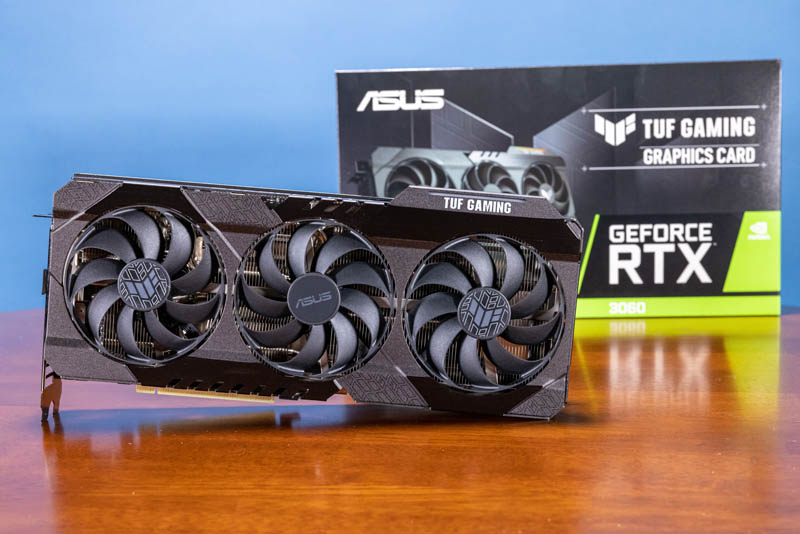
This is actually a fairly massive card with three fans and a robust heatsink.
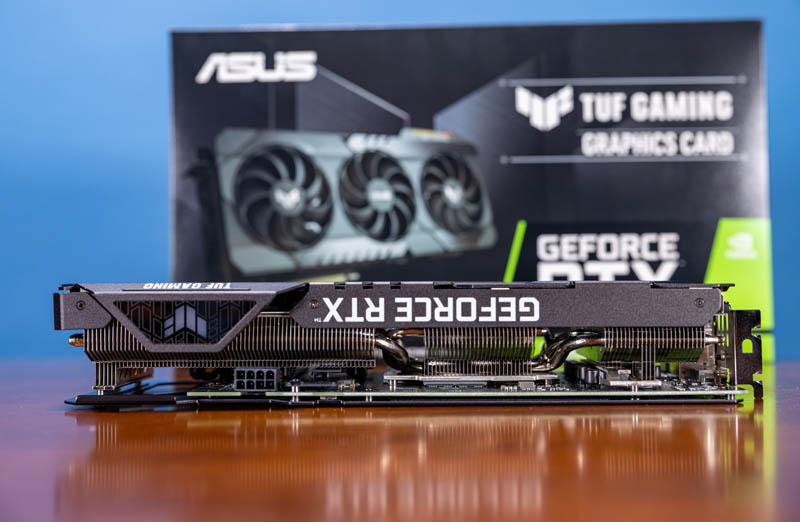
The heatsink is so large it extends past the I/O plate.
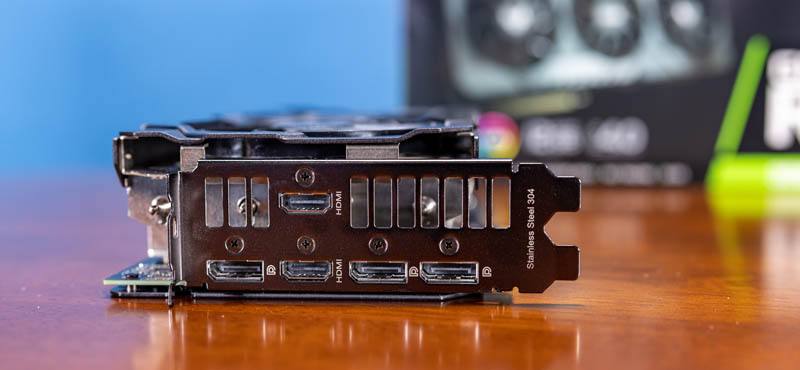
A quick note here is that there is a BIOS setting to be able to use both iGPU and dGPU display outputs for those that need to power more displays.
The rear has a backplate. This is a feature we always like to see.
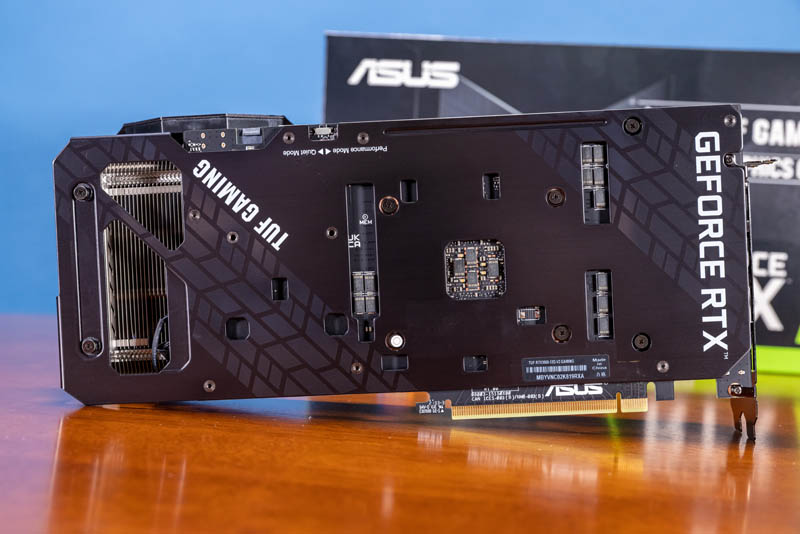
We added the GPU along with doubling the memory capacity to 128GB just to really push this platform a little further.
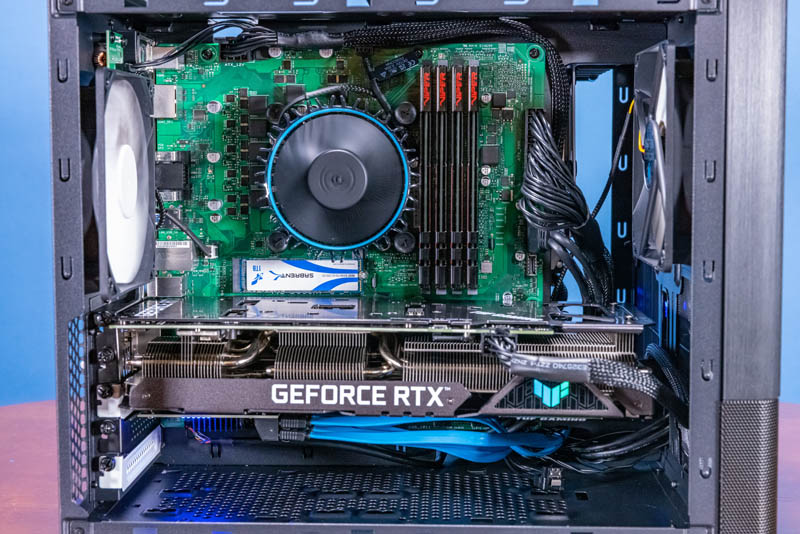
Since we wanted over 100TB of storage, we needed more than the four motherboard SATA ports, so we used an add-in SATA controller. Two notes here. I am usually not a big fan of this type of controller, but it had blue SATA cables bundled and blue LEDs to make the video B-roll look a little more STH. The second note is that a blue background is a poor choice to photograph blue SATA cables.
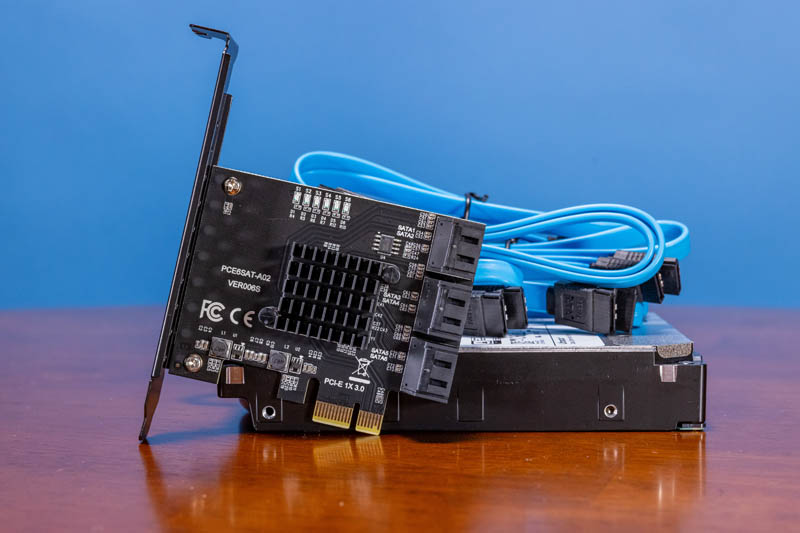
Because the GPU is more than two slots wide, we only can use this one PCIe x1 slot. We also had a 2.5GbE adapter that we tried, and it worked, but we could not install it simultaneously because of the GPU size (that also barely fit the Node 804 chassis.)
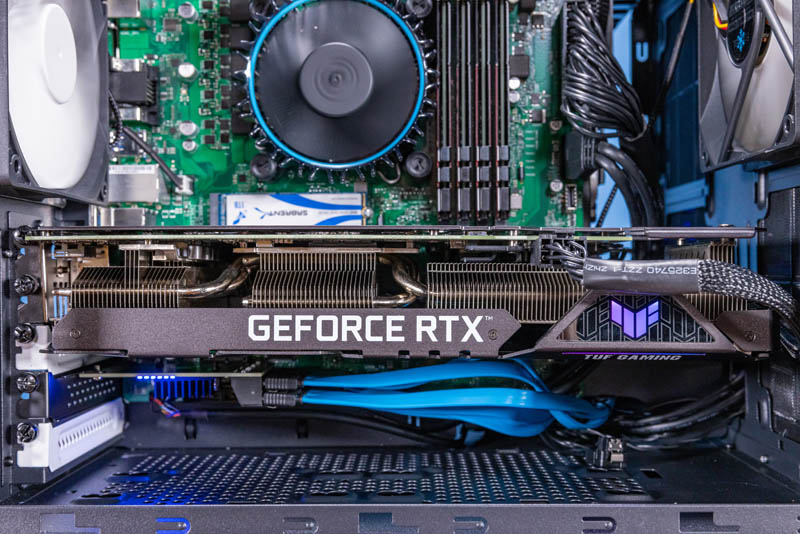
On the rear of the system, we used 6x 18TB WD HC550 drives to give us 108TB total capacity.
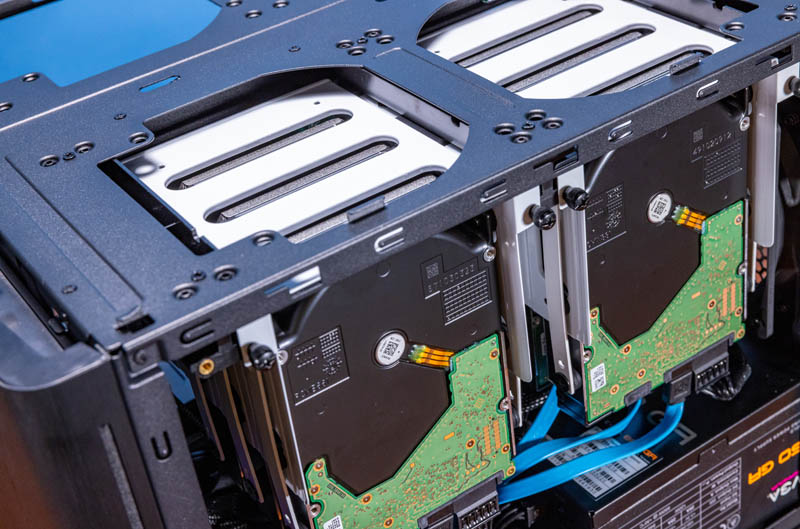
Normally if one did not have a lot of storage, a different chassis that is smaller would be used, but with the GPU and the hard drives, we had a much larger chassis.
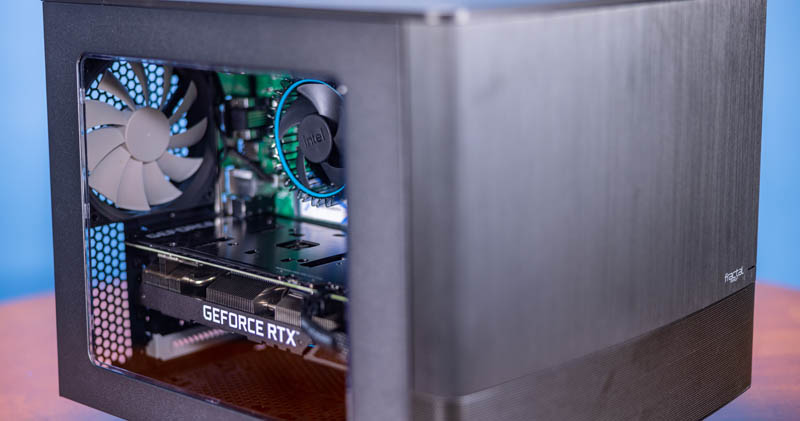
Here is a quick Windows 11 Pro shot of the system as well.
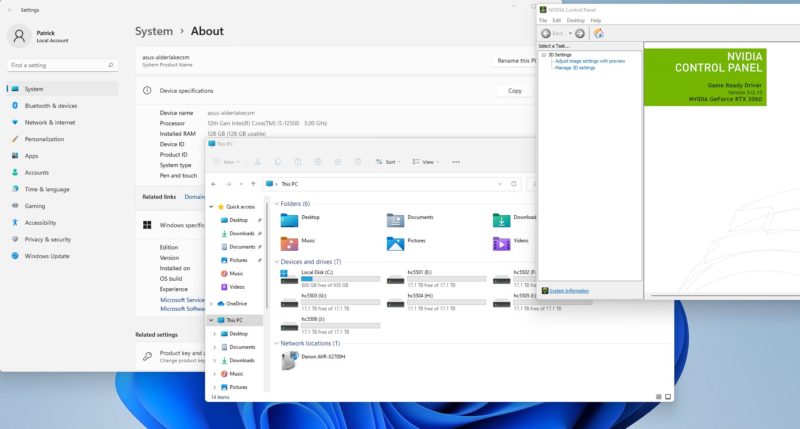
All told this was a large platform, but it also shows that one can build something more robust even from a CSM motherboard.
Final Words
It has been a long time since we reviewed an ASUS CSM motherboard. We looked and although we have done many, the last was the ASUS B85M-E/CSM Motherboard Review in 2013. The line has certainly changed diverging more from the consumer platforms than it had previously.
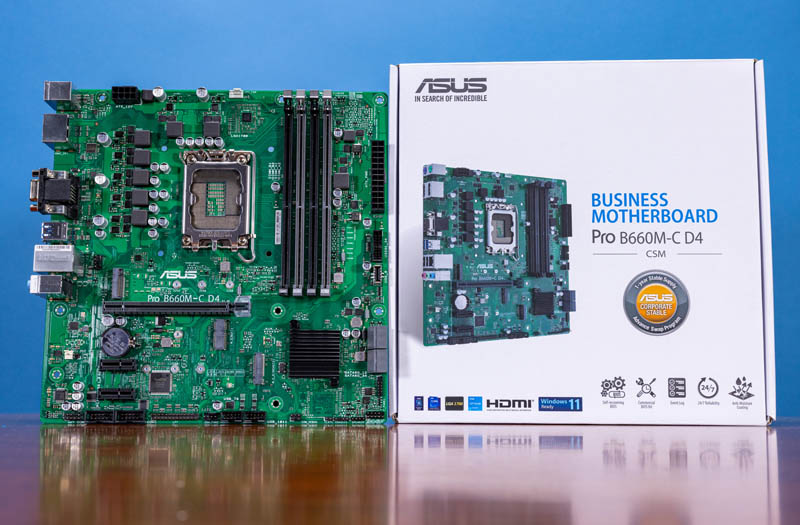
The fact that it looks like a basic green motherboard makes some assume it does not have features nor expandability. Doing this ASUS Pro B660M-C D4-CSM build, I think we debunked the expandability discussion quite a bit.

At $169, this is not as inexpensive as some consumer motherboards, but there is more that you are getting with this than just the motherboard. One gets features like a more stable supply chain, ACCE management for managing many systems, and even the ability to customize BIOS to some extent. There is more, but the key is that the CSM boards may still be mATX and B660 based, but they are catering to a completely different market segment.
Hopefully, we get to review another CSM motherboard in less than an 8-9 year interval.

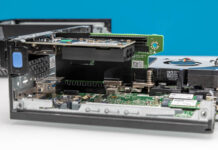


Any ideas about powerusage vs more “gaming/consumer” orientated mainboards?
re: sata card
Recommend additional fan for cooling sata card chip.
(Mine could work for 5 day of constant formatting or random access of multiple hdds, but fail (disk not attached) after 6 hours of realtime use of moderate sequential file writes with one hdd)
Hdds, and not consumer fans, are loud, imo.
Already with super wepyc you were warned of low air flow for io cards, also nonrack built.
Would be interesting report: the stability of setup, and if used for 24/7 or not.
It also seems that here 4 fans for hdds could be installed (no top cover anymore though, 2 if top cover remains) in a ghetto version with hdd temp concerns.
Do business build their own PC’s? Asus board looks so ugly. Can’t remember the last time they made ugly board. Lol
Imo it’s waiting for the W680 motherboards, such as by Asrock in various formats and also SUperMicro announced some.
Due to competition by AMD, Intel has finallly moved to unlock full ECC on their 12th gen core series chips when used in combination with a W680 motherboard (so still some segmentation). But it means we finally get ECC on this cheaps. The only other workstation chip by intel right now is the W3300 series, which is at a far different pricepoint and offers way lower IPC. (obviously it has some very high end workstation features). Other than that the W1300 series is a bit of a joke, with most manufacturers seemed to have skipped W580 motherboards entirely.
So bottomline, W680 with Alder-Lake S CPUs are going to offer full ECC support with core chips like the I7 12700K etc. Those cheaps offer very good performance and have quite a few PCIE 4.0 lanes when considering the CPU and chipset lanes combined. Very good entry to mid-level workstations. I am really looking forward to that.
Hurray for comptetition!
Why don’t You test vPro capability? I wonder how it is working in this motherboard and what I can require for this